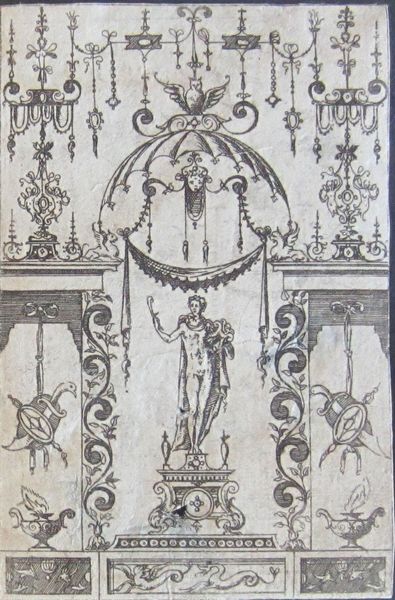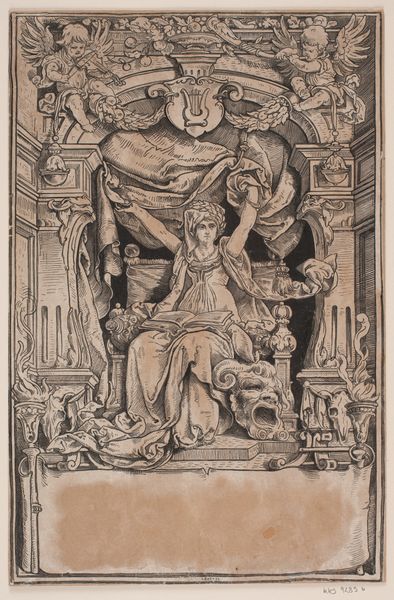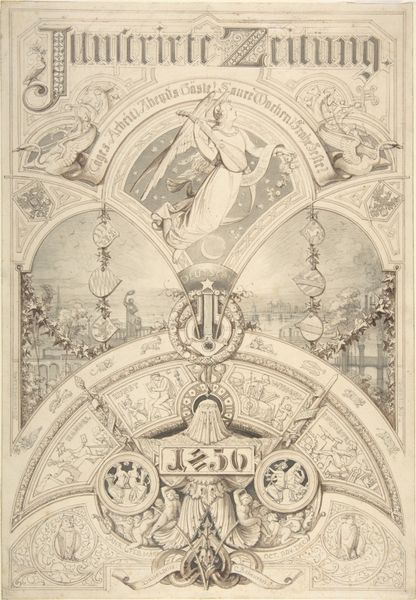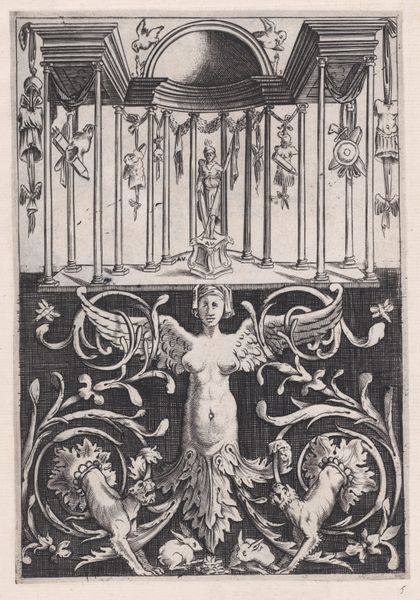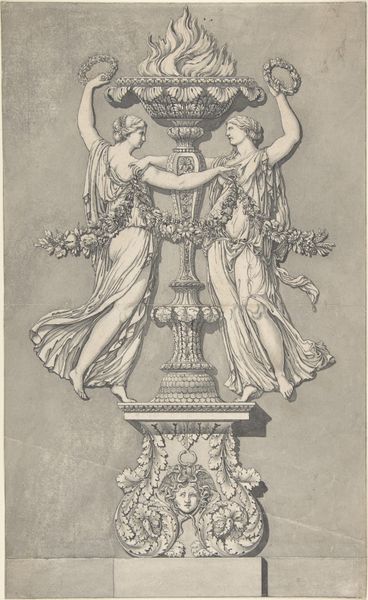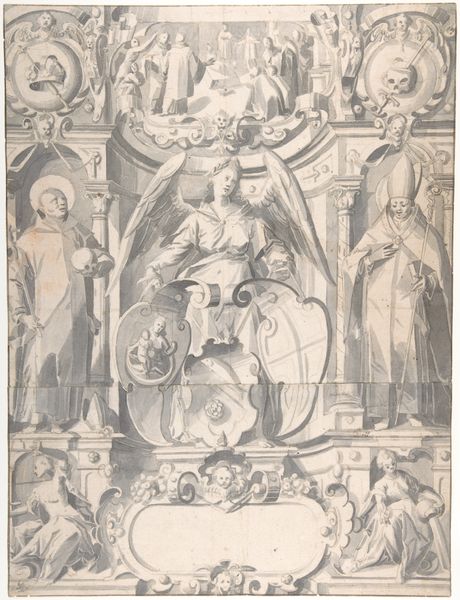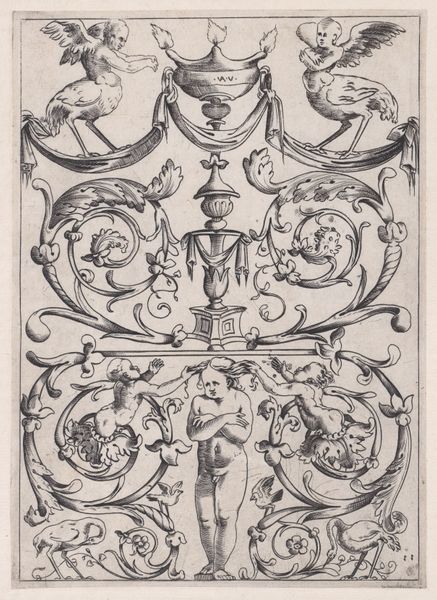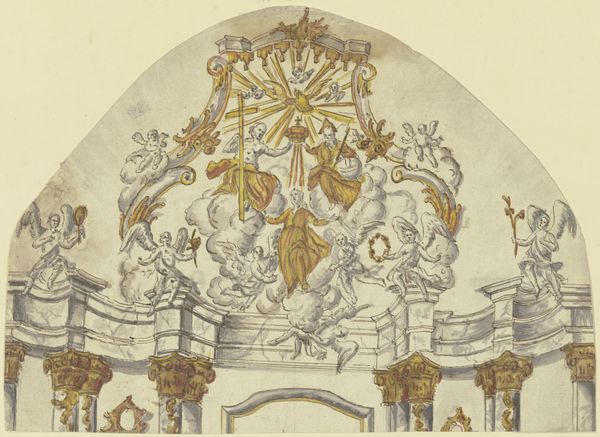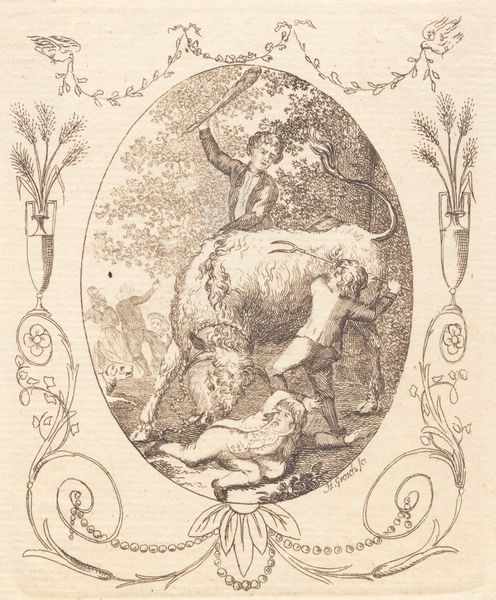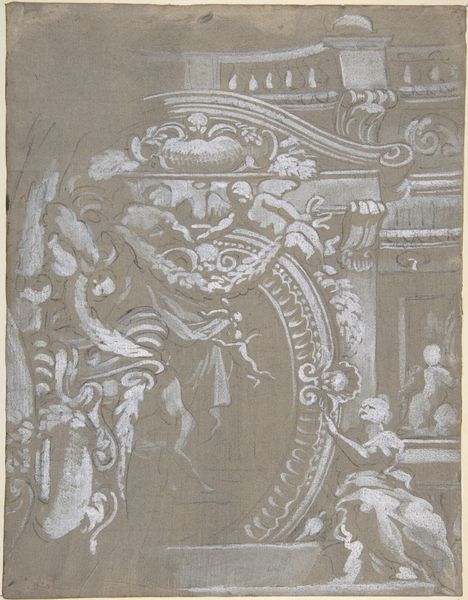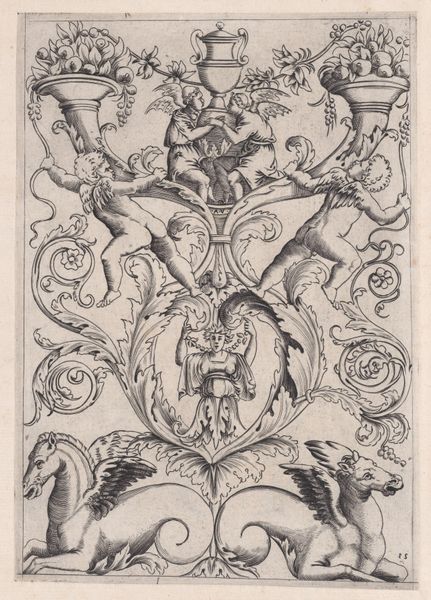
painting, fresco
#
narrative-art
#
baroque
#
painting
#
painted
#
figuration
#
mural art
#
fresco
#
genre-painting
#
history-painting
Dimensions: height 54 cm, width 40.7 cm, depth 3 cm
Copyright: Rijks Museum: Open Domain
Editor: This striking Delftware tile tableau from 1634, now housed in the Rijksmuseum, depicts Marcus Valerius Corvus. It's made of individual tiles that create an arched image of this armored, somewhat flamboyant figure. The blue and white palette feels classic, but the almost playful rendition of the subject intrigues me. What historical context shapes our understanding of this piece? Curator: Indeed. The piece reflects the era's fascination with classical antiquity, specifically through the lens of national and civic identity. Tile tableaux like these were often commissioned for wealthy homes, not just as decoration but as statements. Editor: Statements of what, exactly? Curator: Think of the early 17th century. The Dutch Republic was a rising power, and there was great interest in narratives of heroism, valor and virtue. By depicting figures from Roman history like Corvus, commissioners would tie into a longer history. Does that tie-in have any significance to Dutch Republicanism? Editor: Possibly the aspiration to equal, or even replace, the dominance of the Roman Empire, I suppose? Is it a simple attempt at creating cultural capital, by associating themselves with figures like Corvus? Curator: It's both. It served to create cultural capital and promote a particular view of citizenship within the emergent Republic. In what other ways would those aristocratic ties play out within the Netherlands during this period? Editor: It’s fascinating to see how history becomes a tool for constructing a national narrative through art, but the casual viewer will often overlook this background. I'll remember to dig deeper next time. Curator: Exactly, it makes you appreciate the complex layers embedded in seemingly simple decorations.
Comments
No comments
Be the first to comment and join the conversation on the ultimate creative platform.
